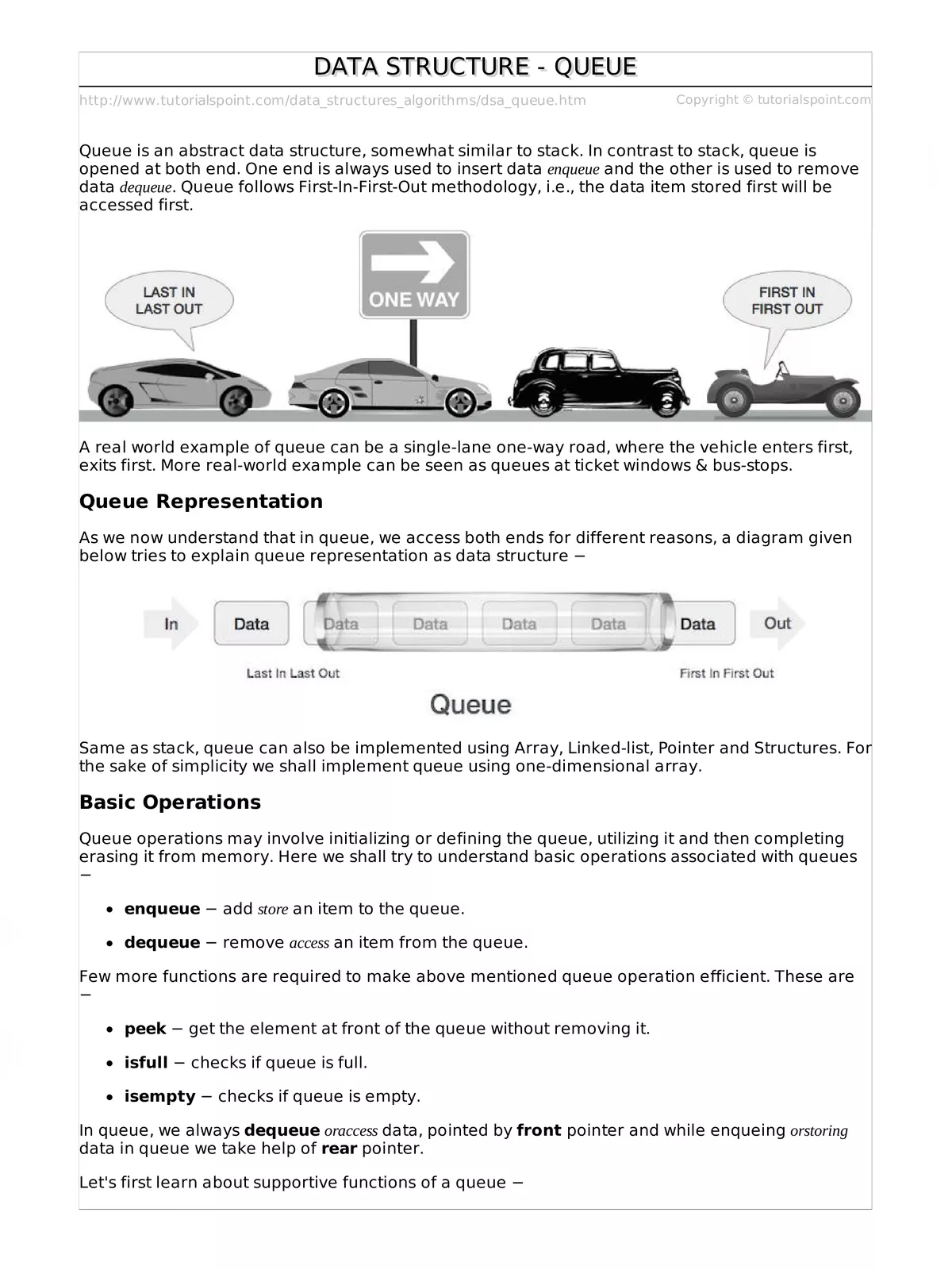Queue in Data Structure - Summary
Queue is an important abstract data structure that plays a vital role in programming and computing concepts. Unlike Stacks, a queue is open at both ends; one end is meant for inserting data (enqueue) while the opposite end is for removing data (dequeue). This structure operates on the First-In-First-Out (FIFO) principle, which means the item stored first will also be accessed first.
Think of a queue like a line of people waiting to buy tickets—where the first person in line is the first to be served. This is often referred to as “First come, first served.” A real-life example is a one-lane road where the first vehicle to enter will be the first to exit. You can also find queues at ticket counters, bus stops, and many other places.
Understanding Queue in Data Structure
Queue operations are fundamental, involving tasks such as initializing or defining the queue, using it, and eventually clearing it from memory. In this section, we will explore the basic operations related to queues:
- enqueue() – This operation adds (stores) an item to the queue.
- dequeue() – This operation removes (accesses) an item from the queue.
To improve the efficiency of queue operations, a few additional functions can be quite beneficial:
- peek() – This function retrieves the element at the front of the queue without removing it.
- isfull() – This function checks whether the queue is full or not.
- isempty() – This function checks if there are any elements in the queue.
In a queue, we always access data through a pointer known as front when we dequeue, while the rear pointer helps us when enqueuing data into the queue.
You can download the Queue in Data Structure PDF using the link given below.
